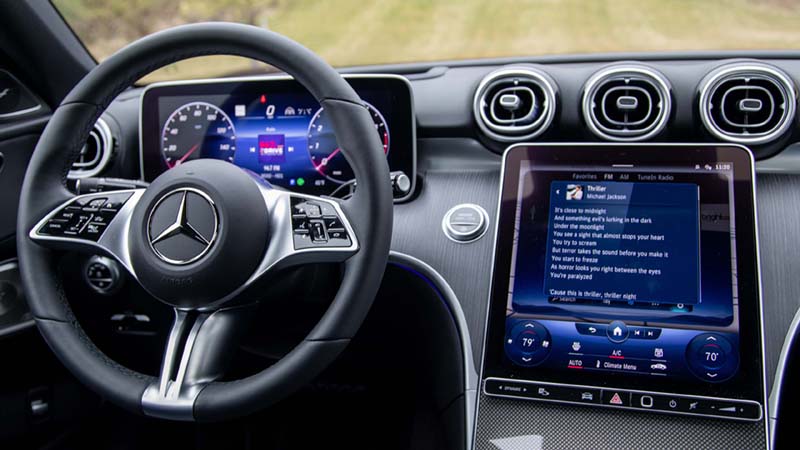Sponsored blog post, from Gereon Joachim, Vice President Automotive Sales & Strategy, EMEA, Xperi
Over the last two decades the media industry has witnessed the introduction of high-volume data on audiences and usage. The internet offers troves of consumer usage data, TV set-top boxes and smart TVs provide insights on TV viewing, and mobile phones generate significant information on consumer location.
Until now, AM/FM over-the-air radio hasn’t had an answer to this big data trend. This is about to change, as the radio industry is at an exciting inflection point in how its product is delivered to consumers in connected cars and what’s possible in terms of analytics.
Radio and connected car trends
Radio isn’t going anywhere. The latest RAJAR quarterly radio audience research reported that a significant 89% of the adult (15+ years old) UK population tuned in to radio stations each week, averaging 20.3 listening hours a week. This makes radio a powerful way to reach the UK consumer on the path to purchase, and a significant 23% of this radio listening time is in a car/vehicle.
In fact, the car cockpit is fast becoming part of a customer’s digital ecosystem. Connected cars are essentially turning into supercomputers on wheels, with the vehicle interior transforming into a third space with similar expectations of personalisation and being part of a user’s digital lifestyle.
There is no disputing the fact that radio plays a starring role in cars; it has done so for decades. But what used to be called the “car radio” has evolved into a multi-faceted infotainment system, where various content sources are being aggregated, ranging from podcast, internet radio and audio books to TV, movies and games. It follows that users expect a different radio experience in the car dash. And radio has long been missing a crucial aspect of other modern content consumption— accurate data about its listeners.
For all its primacy in the dash and relevant content it produces, radio has been lagging on the audience measurement front, especially when compared with big tech’s undisputed and somewhat controversial big data reach into the minds and behaviors of consumers.
The opportunity is particularly ripe in connected cars, by which we mean a vehicle that is connected to the internet via mobile data networks and can transmit data to other devices within or outside of the car. For the ultimate in-cabin experience, drivers and passengers will be recognised by their vehicle, with entertainment and content preferences automatically pre-loaded or adjusted to match their preferences.
What’s next for in-car radio
Radio can thrive in this new digital cockpit, but it needs to ensure its content (both linear and non-linear) is up to user expectations in terms of imagery and contextual information that digital-savvy consumers have come to take for granted in their smart devices.
The infotainment solution in the car should — at the very minimum — recognise the patterns of an individual’s daily behaviour, but also be smart enough to make recommendations based on preferences and one-off events such as a pre-game broadcast from their favourite sports team.
This can be made possible with content optimisation partners such as DTS AutoStage that specialise in personalisation and metadata (going beyond artist information and images) that ensure experiences are delightful and engaging. Metadata powers all of the features we take for granted in streaming services, like intuitive search, browsing within categories and genres, recommendations, and dynamic play listing and content moderation.
The route to audience transparency
Bringing all these capabilities together, the newly launched DTS AutoStage Broadcaster Portal is unlocking a whole new level of insight for broadcasters that gives unprecedented access to data on in-car listener engagement.
Broadcasters can benefit in many ways, from geographic locations on the road and reactions to in-car content, to visual “heat maps” that overlay programme listening with key local shopping locations. Such valuable insight and context about listener engagement will help to inform programming decisions, understand actual audience size and behaviour patterns, and advertising strategies e.g. selling ads to a retailer in the vicinity of listeners.

To reap the rewards of insightful audience analytics, broadcasters do have to provide some information too. This includes both static and dynamic station content, including station name and logo (static), and now-playing information and advertiser content (dynamic). Essentially, when this information is downloaded by the car, the station can receive real-time insights. So, the more detailed information given, the better the insights.

Privacy is built-in to this process by design, with insights not tied to an identifiable individual, specific geolocation or vehicle, and compliance with local and regional laws and regulations ensured.
Enhancing future in-car radio user experiences
This solution delivers a multi-layered solution that caters to the needs, demands and expectations of end users, radio broadcasters and car OEMs.
Stations will become more discoverable and engaging, leading to extended listening sessions — positively impacting churn and retention and significantly moving the needle for broadcasters.
Time is of the essence, and broadcasters must act quickly. Any continued delay in making broadcast programming metadata a priority will have implications on the in-car user experience and could see radio relegated to a secondary audio service.
Broadcasters can sign up at https://onboarding.connectedrad.io/





